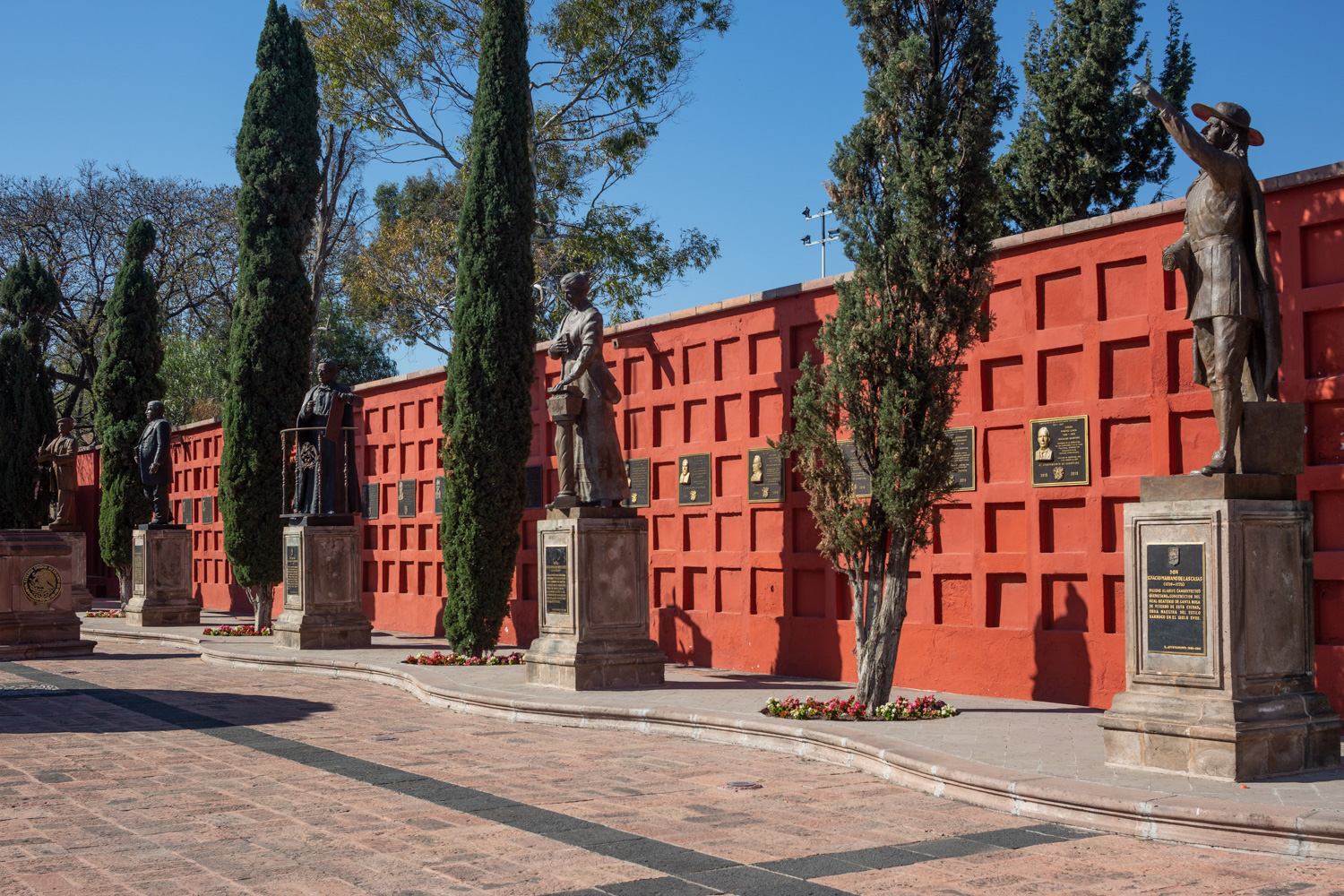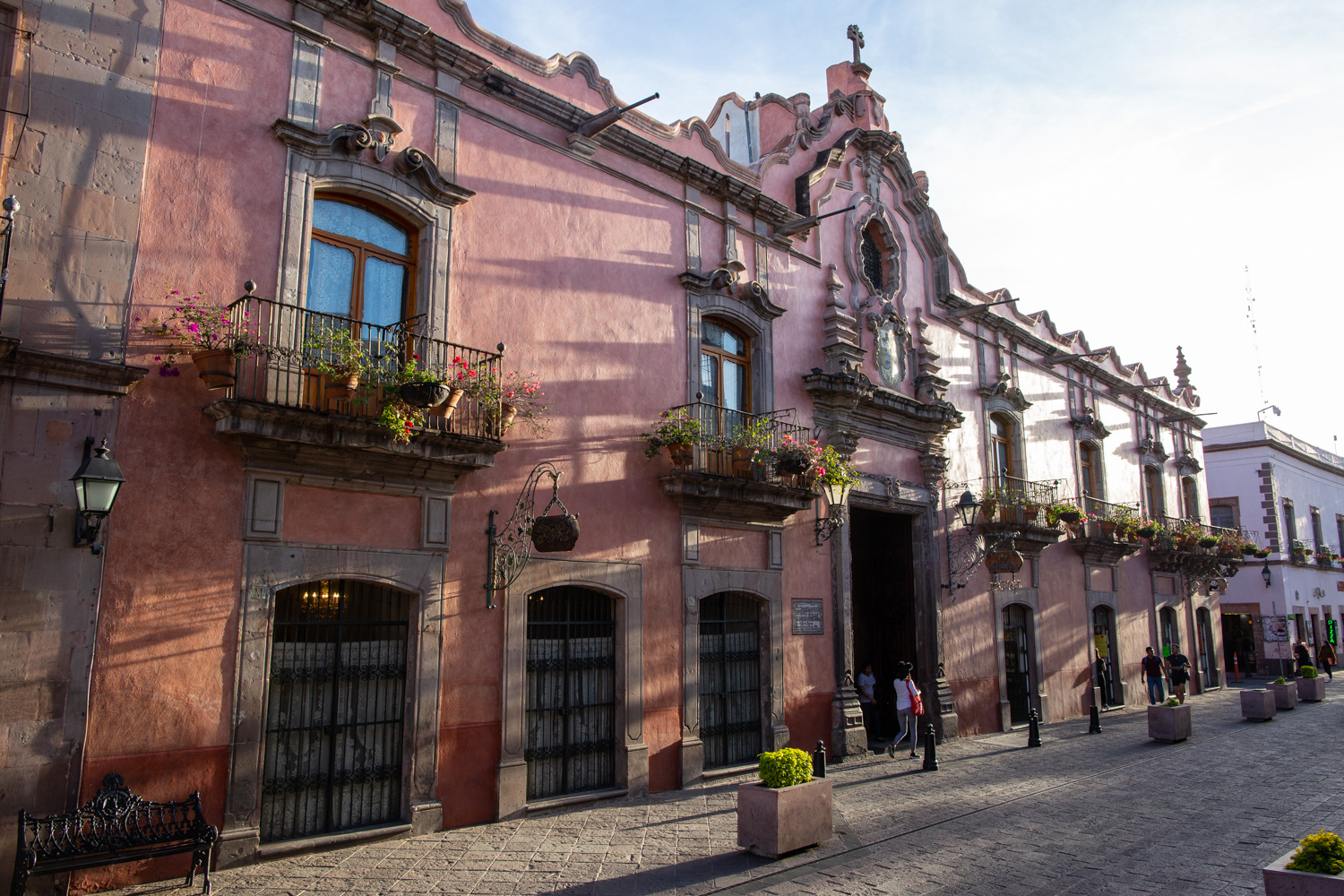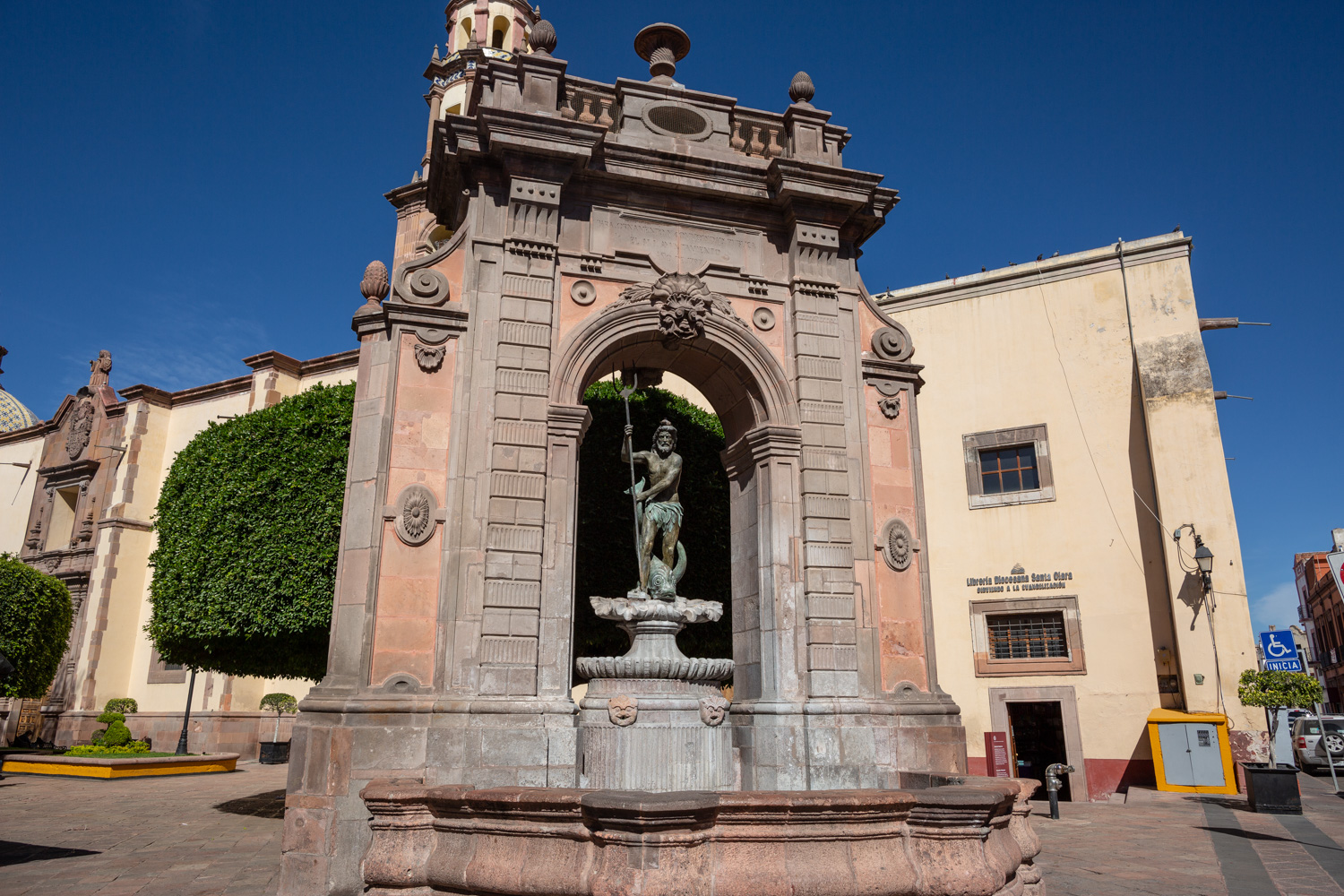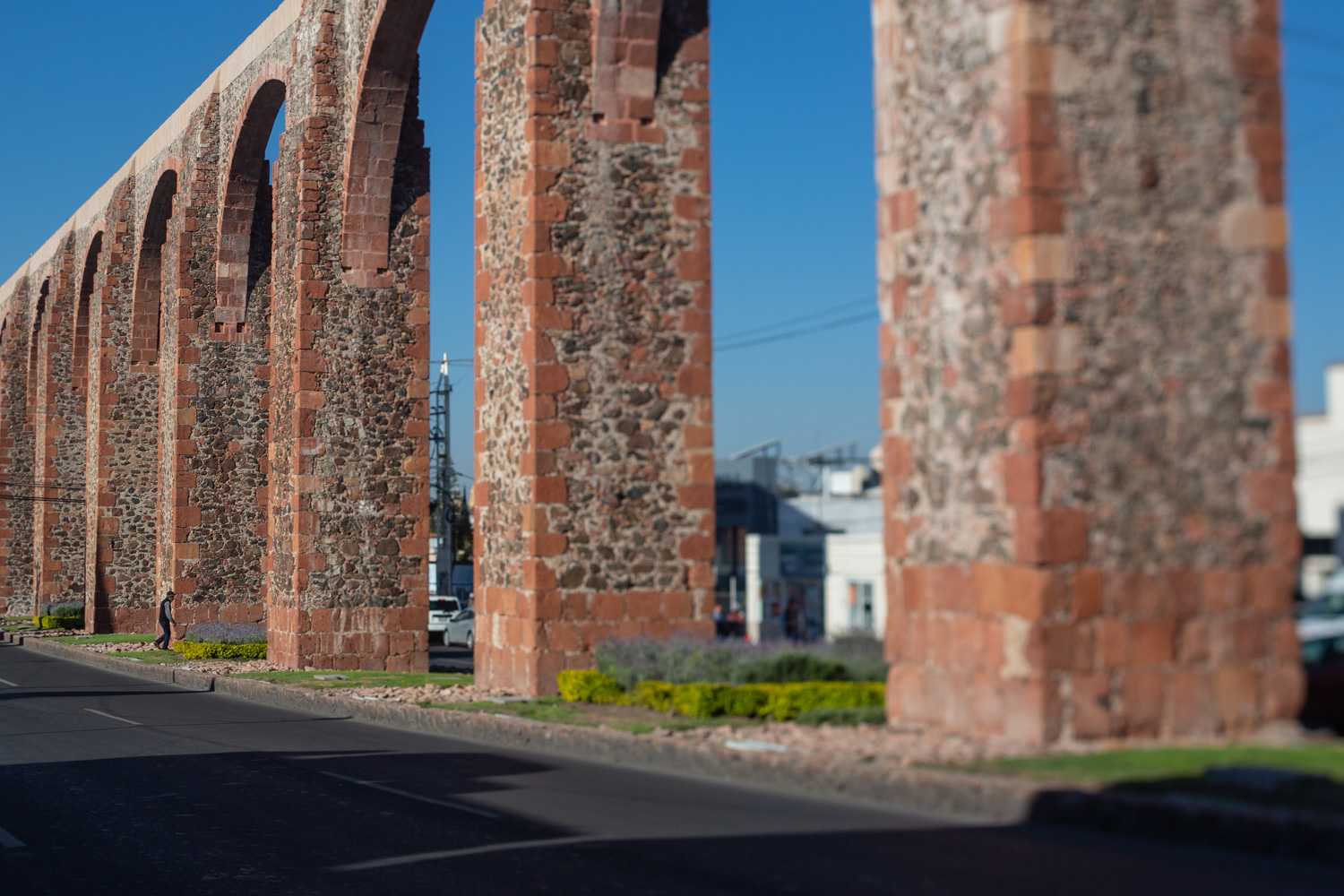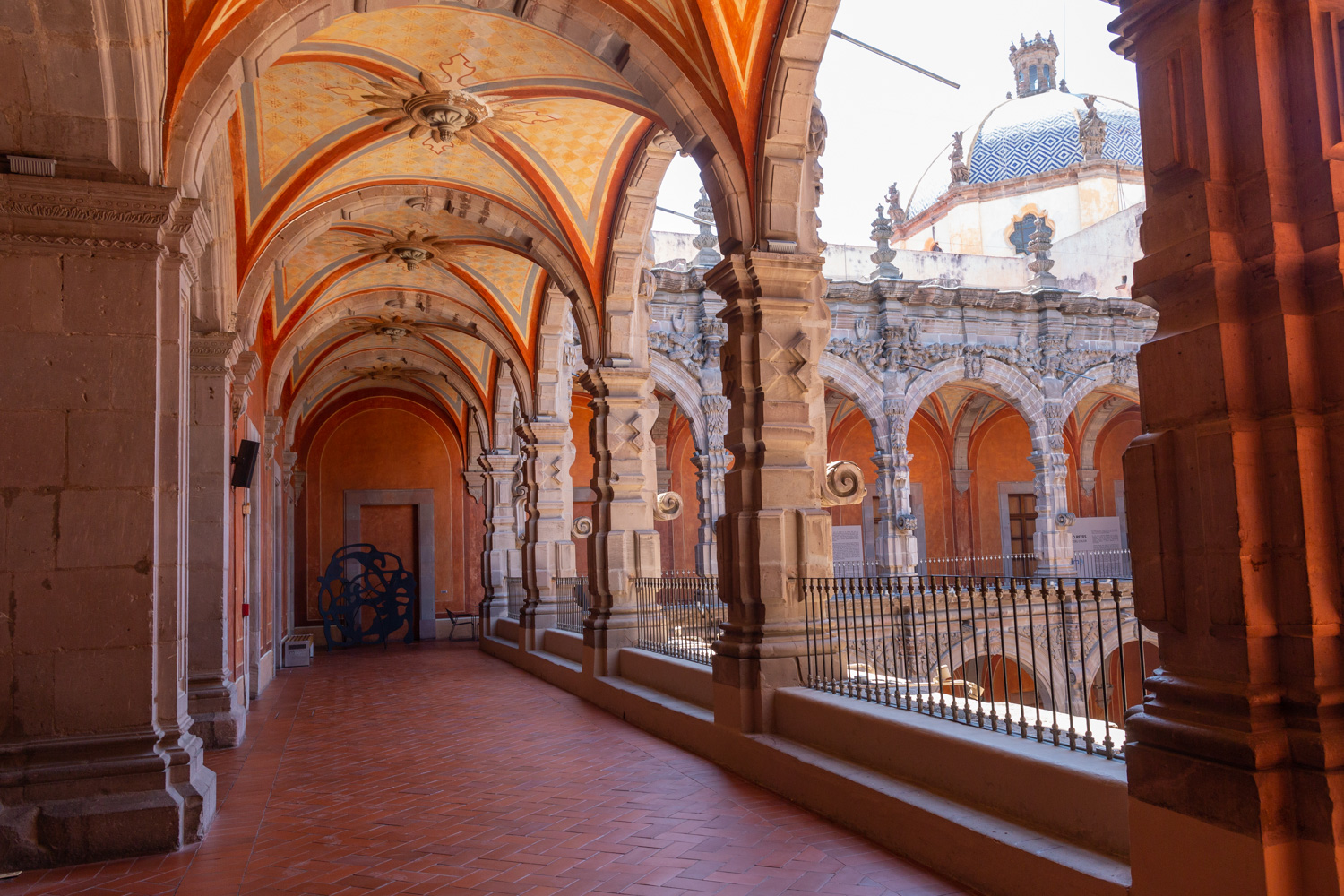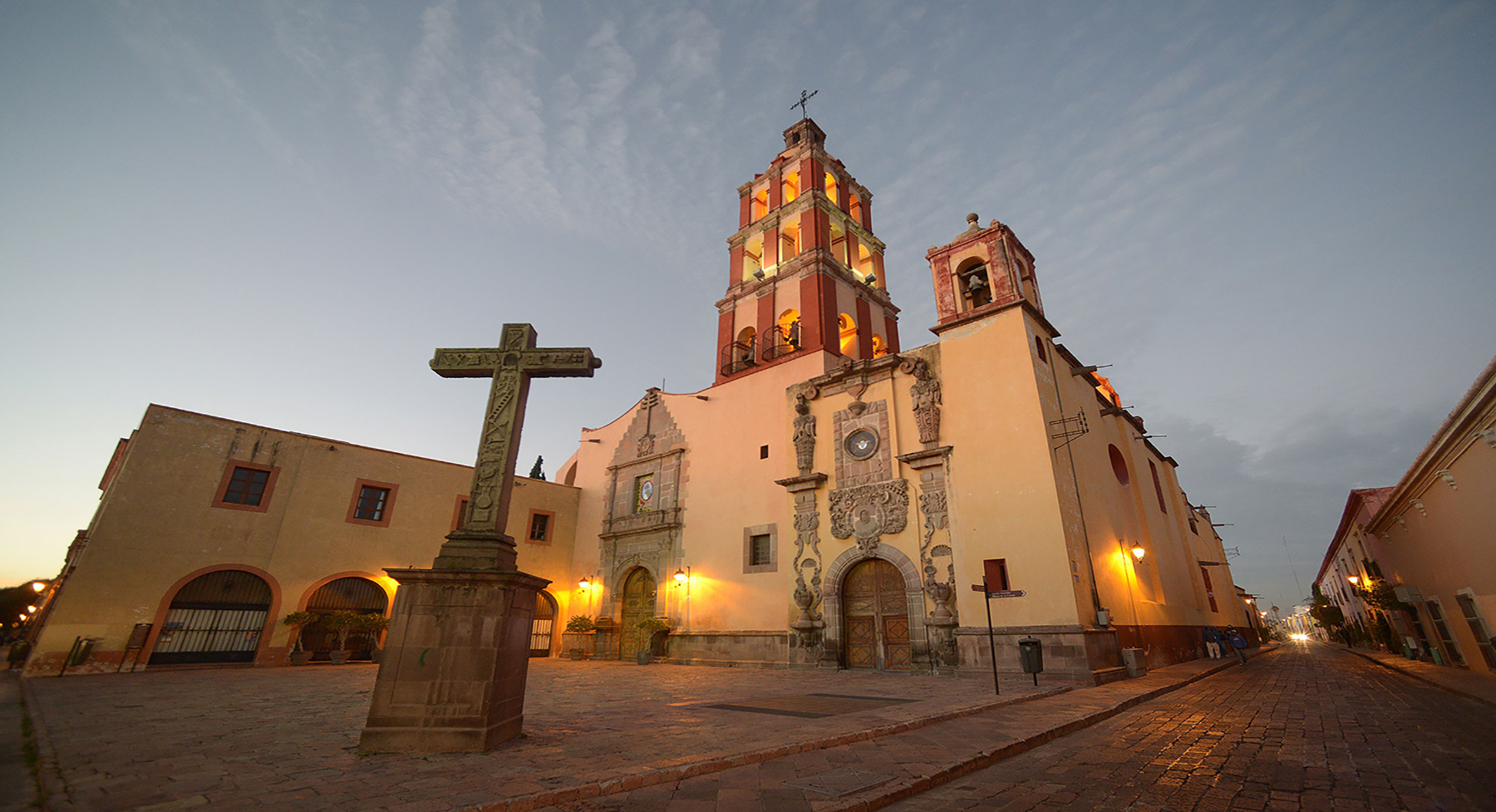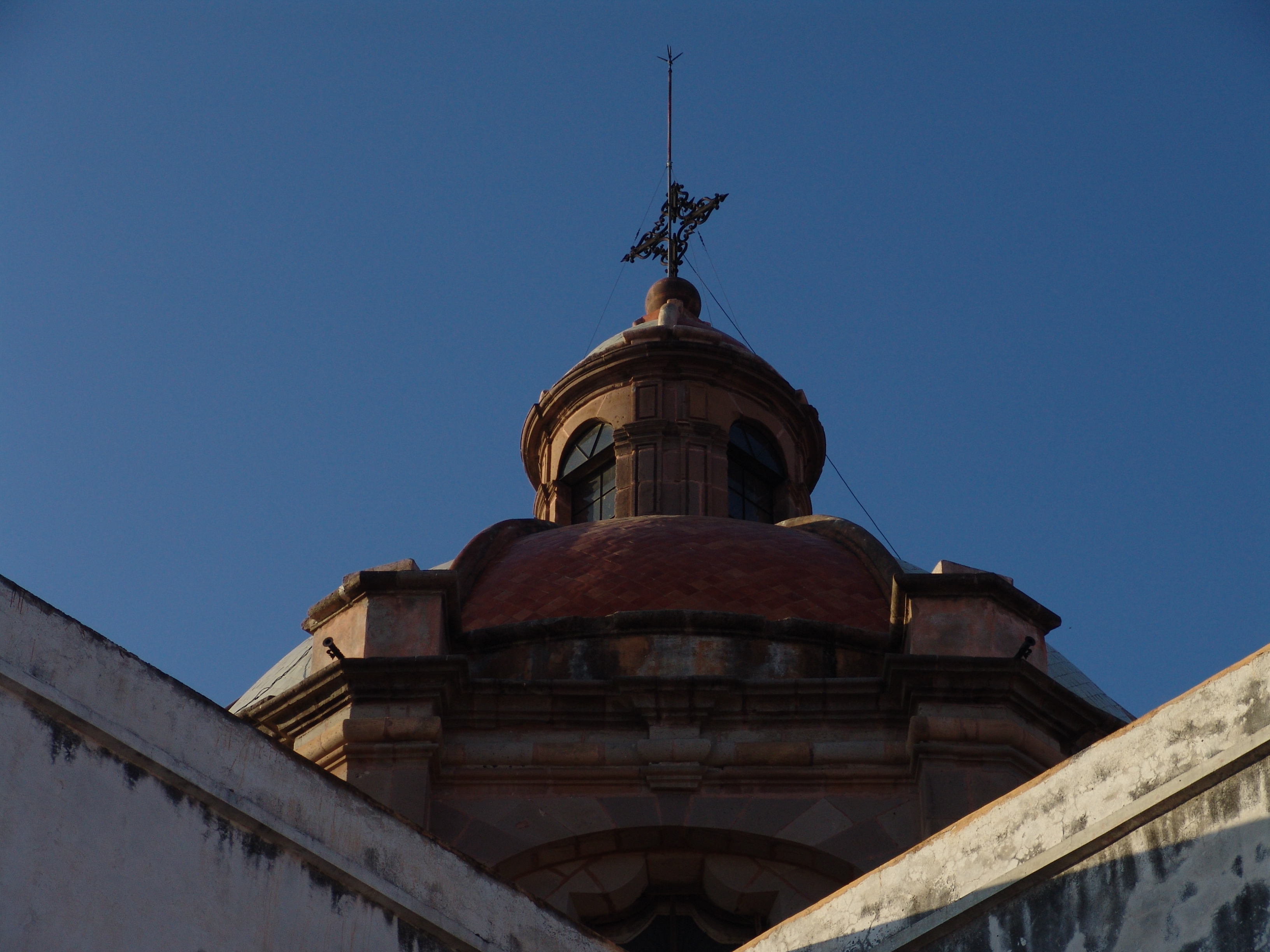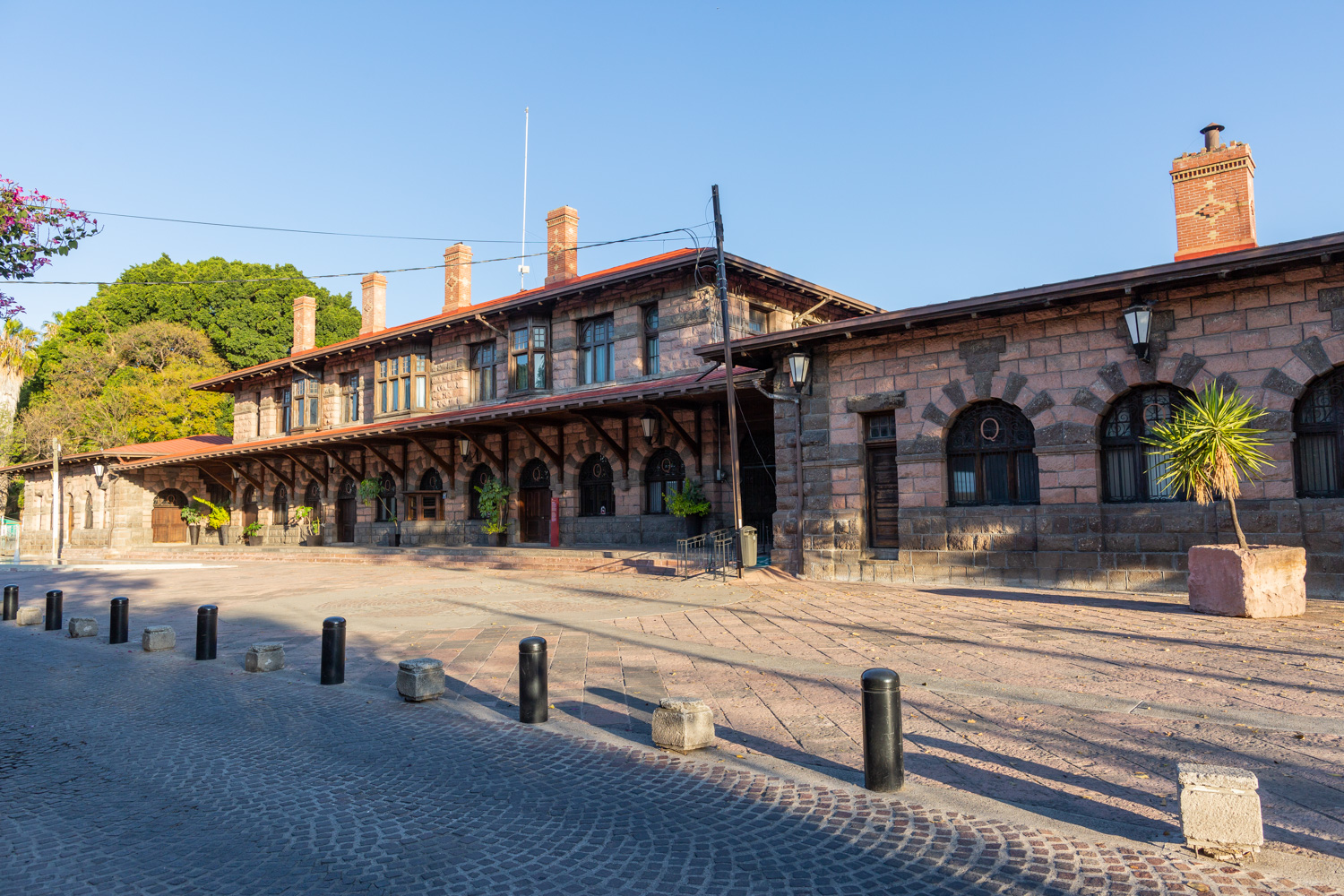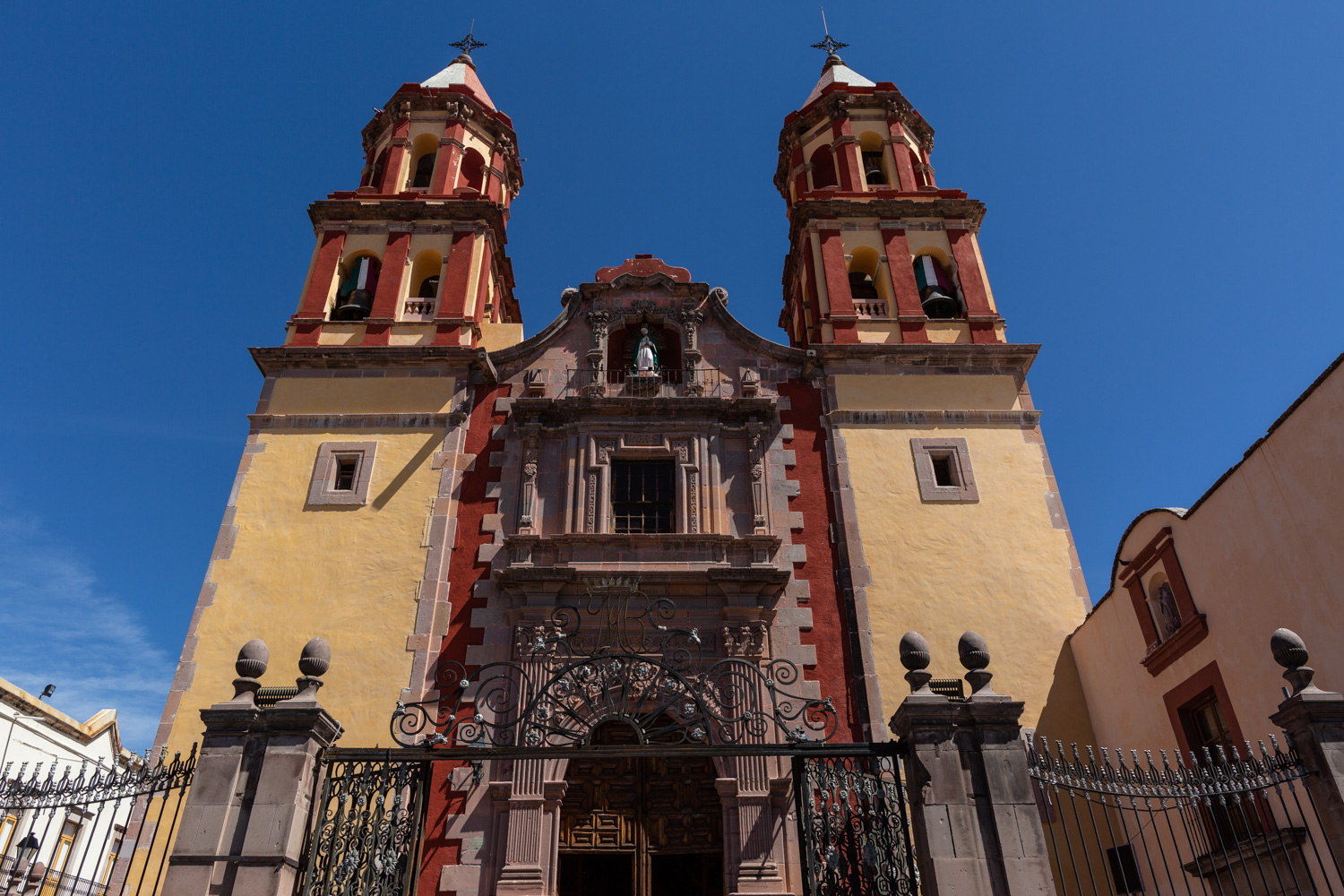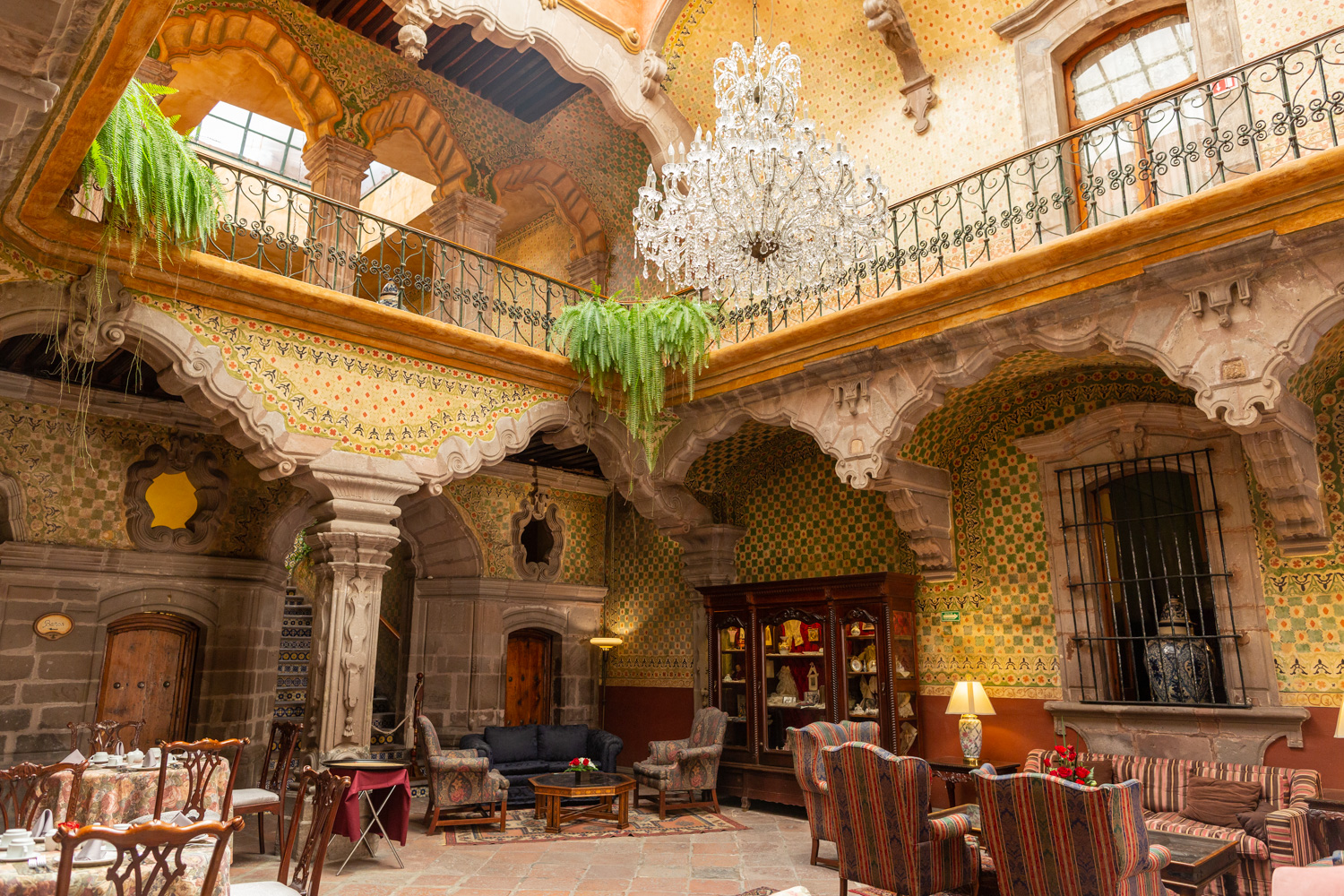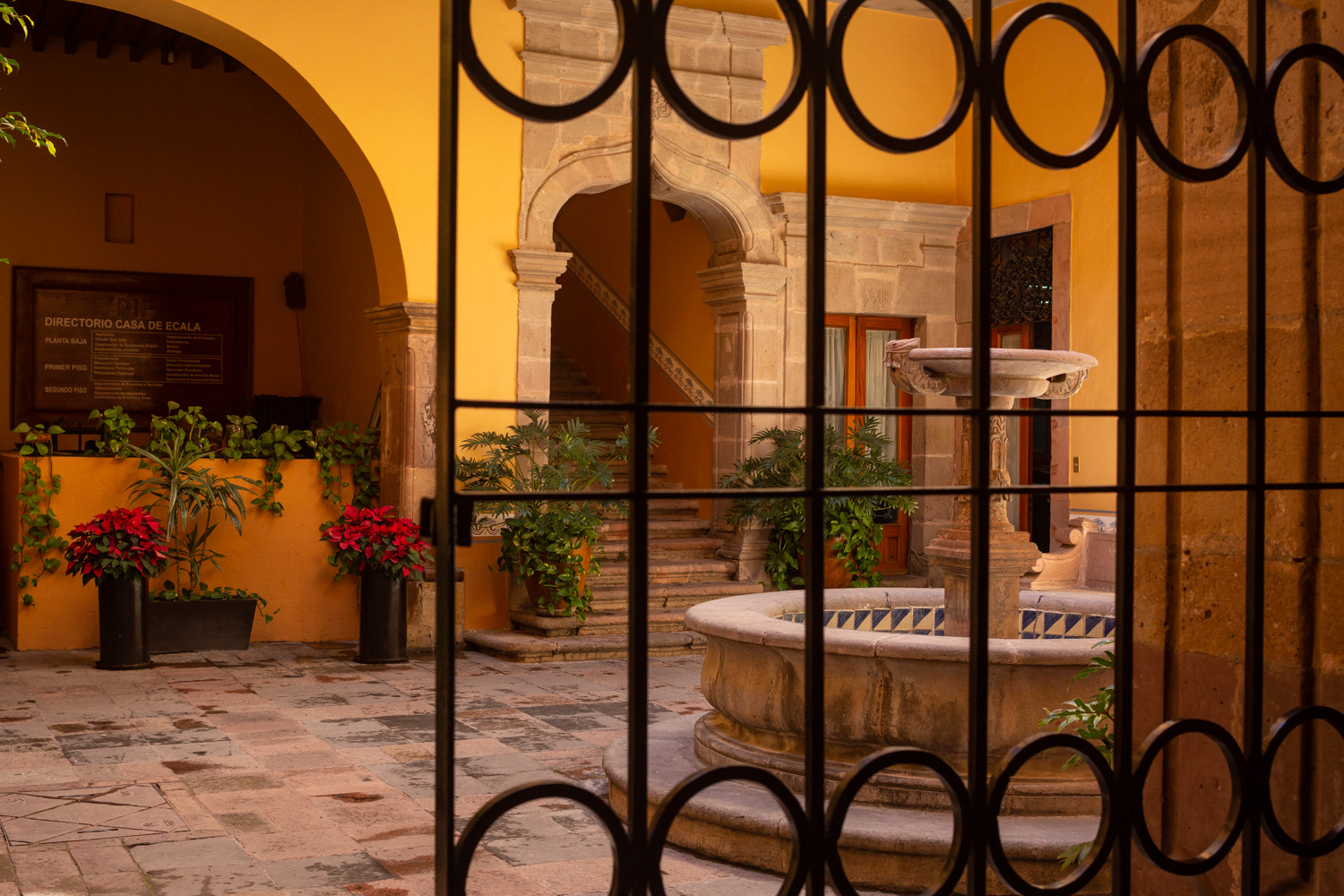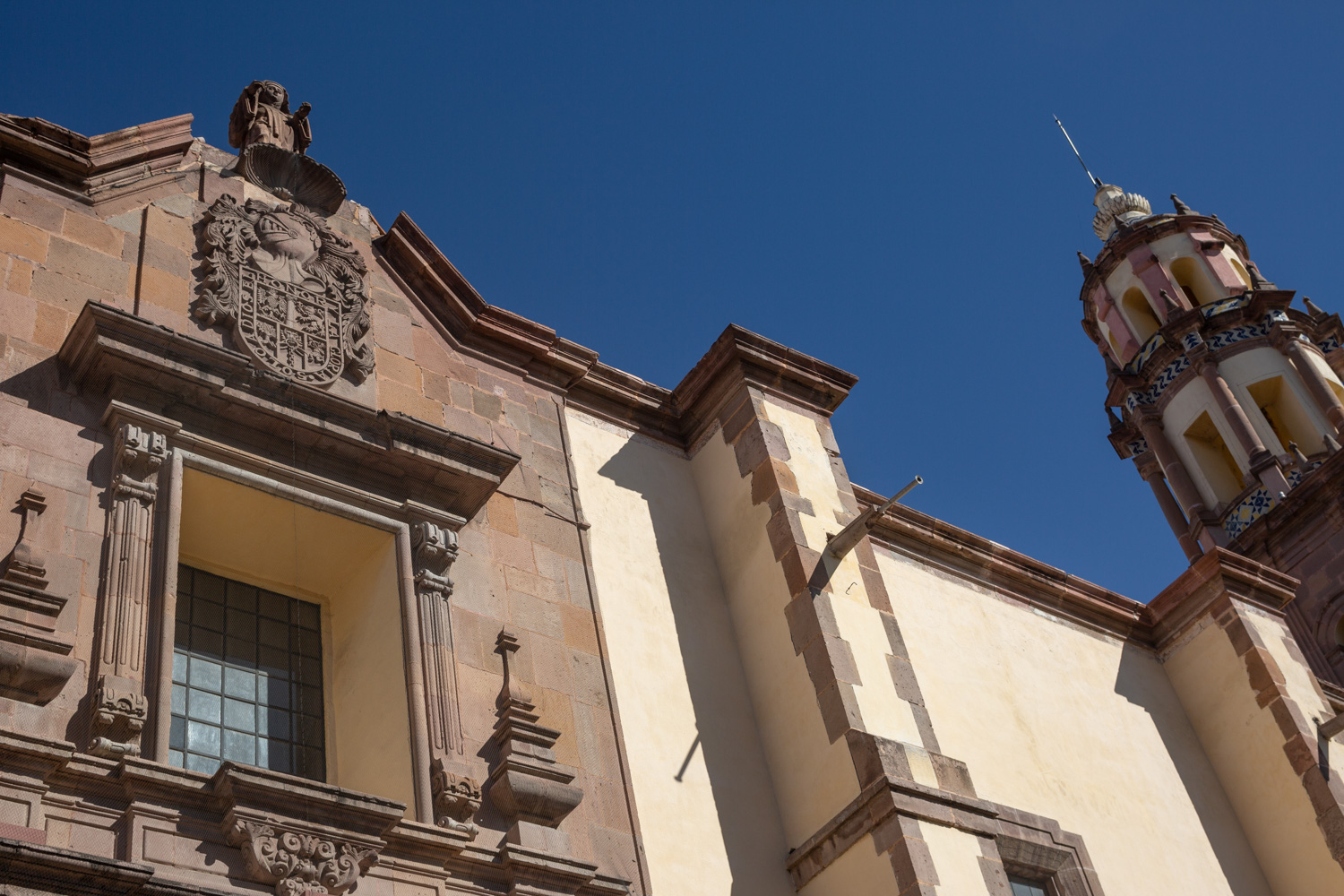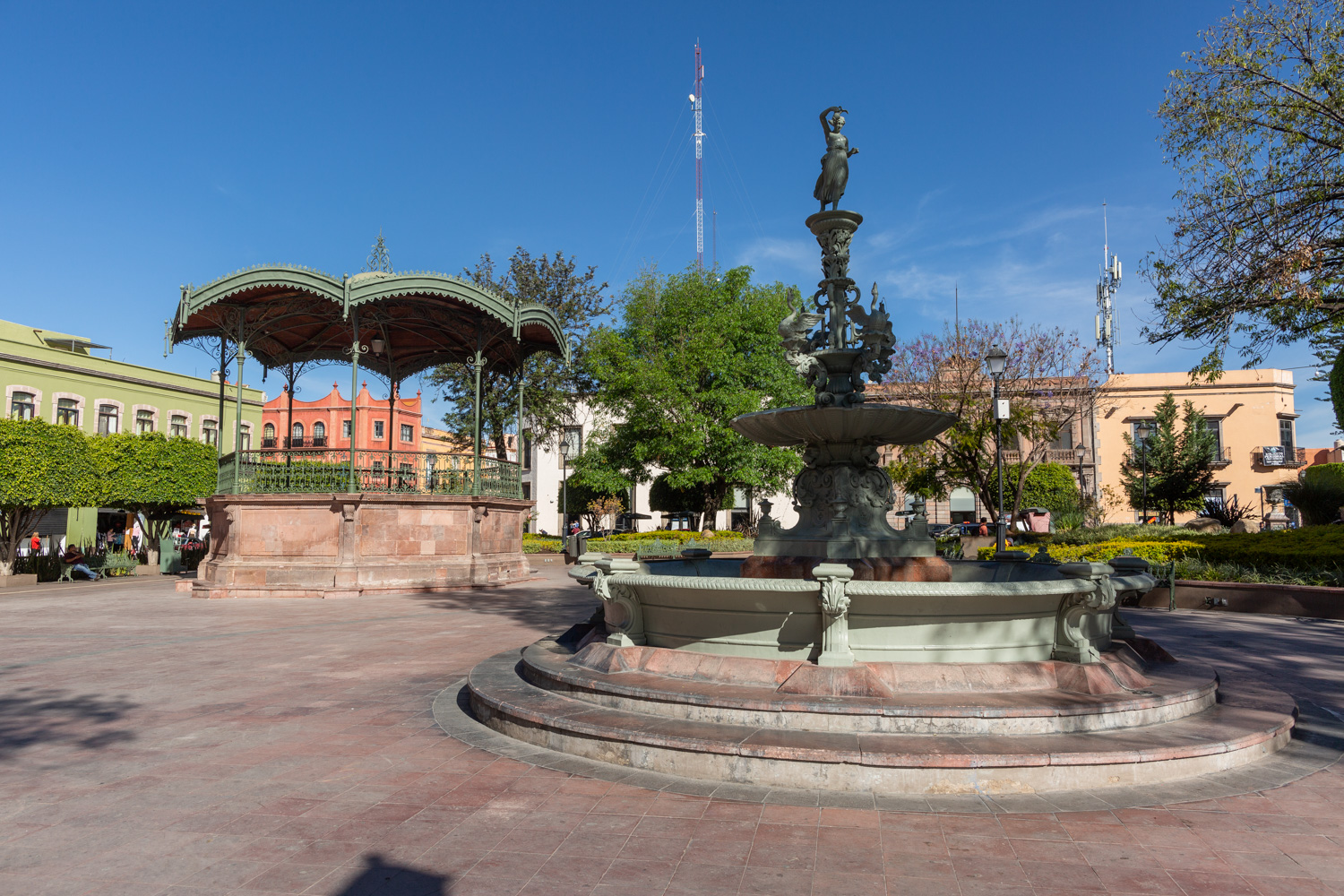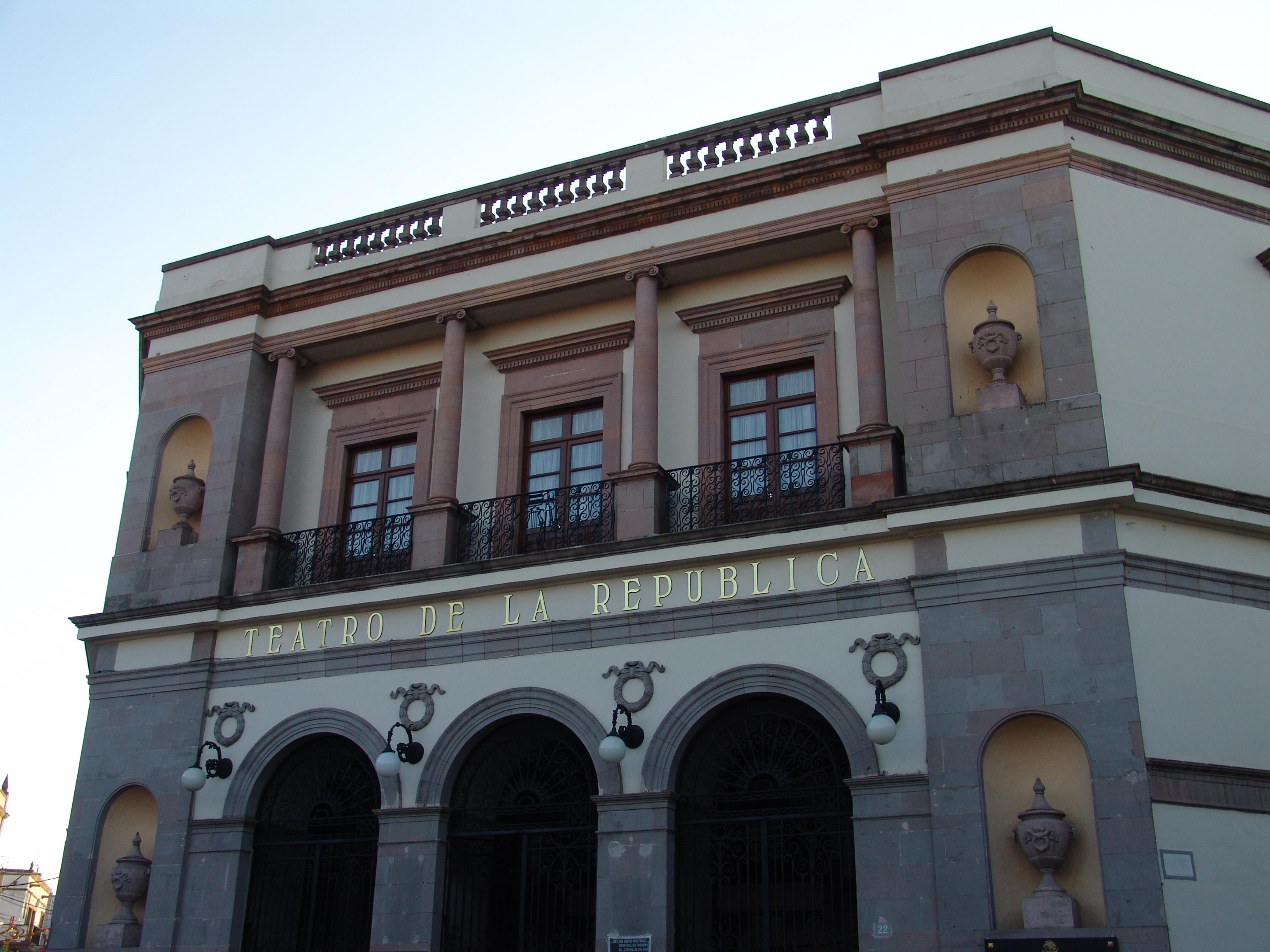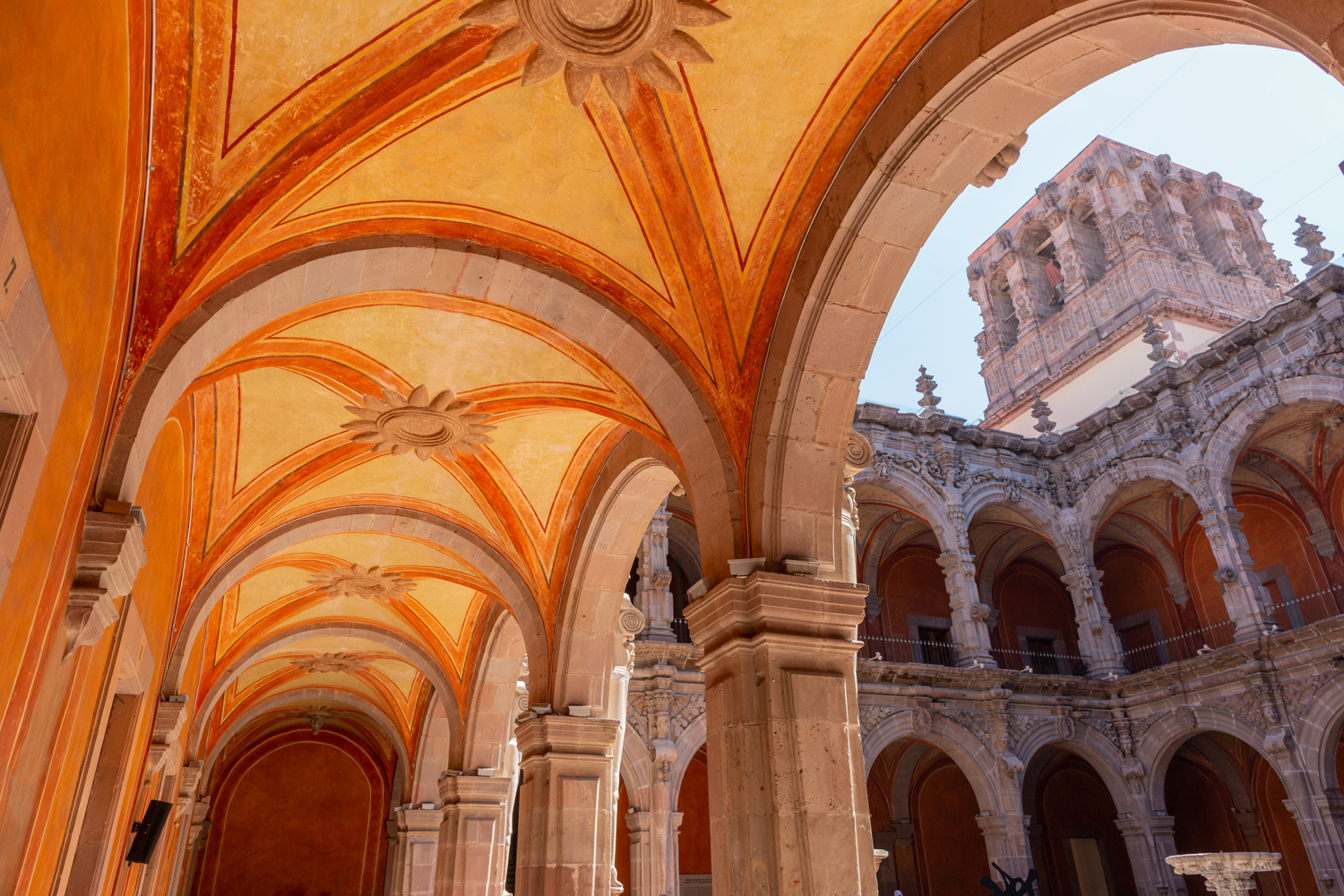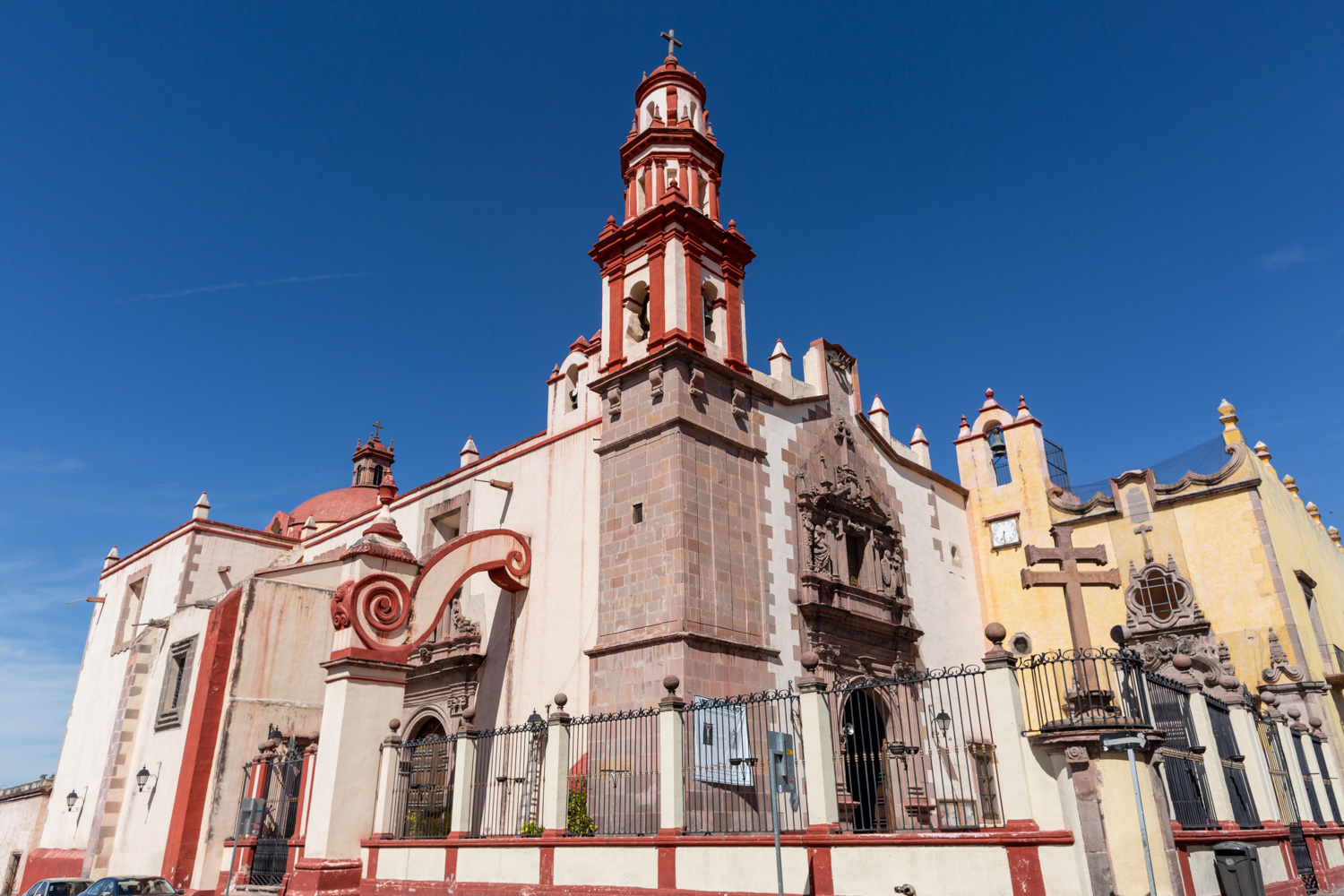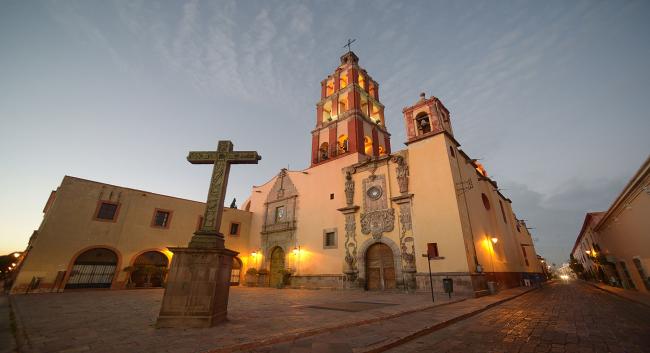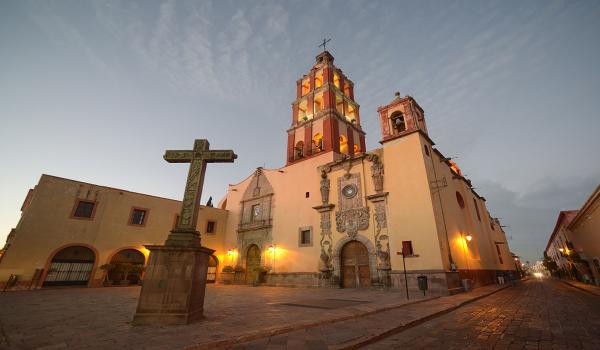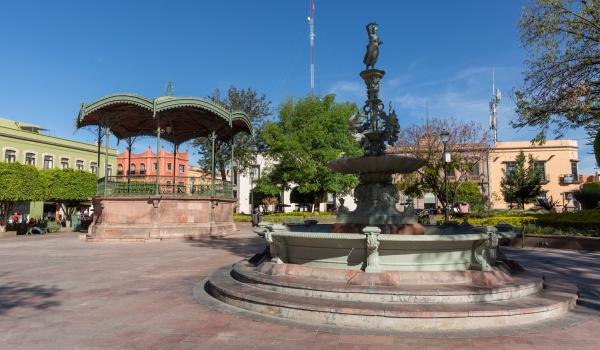Centro histórico de la ciudad de Querétaro
Route element
Centro histórico de la ciudad de Querétaro
Patrimonio mundial
In 1529, a group of families belonging to an Otomi population called Nopala, who lived in the province of Jilotepec, set out for the area of La Cañada, in what is now the state of Querétaro. This area was inhabited by Chichimeca groups with whom the native leader of the group, named Conín, maintained a friendship and exchanged animal skins that the locals traded for salt and grains.
In 1531, a group of Spaniards led by Hernán Pérez de Bocanegra arrived in the region from Acámbaro. They were seeking an outpost towards the rich mining regions to the north, not too far from the fertile lands of the Bajío, to ensure a steady supply of agricultural products. They made contact with Conín, who was converted to Christianity and baptized with the name Fernando de Tapia.
Having already sided with the Spanish cause, Fernando de Tapia was entrusted with the mission of persuading the Otomí groups in the province of Jilotepec to support the occupation and evangelization of the La Cañada region. Once he achieved this, he gathered an army and departed from San Juan del Río on July 23, 1531. He established his camp at Cerro Colorado, overlooking the Querétaro Valley, and sent messengers to his former Chichimeca friends. After several negotiations, the Chichimecas agreed to submit under the condition that they engage in combat with an equal number of men from each side, who would be unarmed. It has been suggested that with this request, the Chichimecas sought to uphold their reputation as fierce warriors and prevent rumors from spreading that they had submitted without a fight.
The battle took place at dawn on July 25, 1531. On one side were the Otomí and Purépecha forces under the command of Fernando de Tapia and Nicolás de San Luis Montañez. On the other side were the Chichimecas. After several hours of combat, no clear victor was in sight. However, by the afternoon, the fierce Chichimeca group began to tip the situation in their favor.
According to tradition, the distressed Spaniards, facing possible defeat, called upon the aid of the apostle Santiago (Saint James). Suddenly, the sun was eclipsed, a dense darkness fell in which the brightness of the stars stood out, and clearly visible was the figure of a large luminous cross. Immediately after, the apostle, whose feast day is celebrated on July 25 according to the liturgical calendar, appeared mounted on his impressive white horse. Amazed by this miracle, the Chichimecas halted their advance and accepted conversion without any resistance. The Spaniards took possession of the site to establish the settlement which, due to its contributions to the Spanish crown, became the Very Noble and Loyal City of Santiago de Querétaro.
By the year 1550, the city of Querétaro was a mandatory passage for traffic heading north and west in New Spain, gaining importance from the opening of the road to the Zacatecas mines. This event sparked the economy and trade, and conditions emerged for the establishment of textile mills producing wool fabrics, cotton, coarse cloth, blankets, cloths, and hats. Along the road, converted into inns, the town of San Juan del Río stood out in the State of Querétaro. The inns were prosperous businesses due to the number of travelers, Spanish landowners, and ranchers seeking to settle near the road. However, their haciendas and settlements periodically suffered attacks by the Chichimecas until 1589.
By the mid-18th century, Querétaro had become a city with many valuable architectural landmarks. Its architecture, both religious and civil, exhibits a Baroque style with distinctive features such as curvilinear arches and undulating cornices. Among the most notable works are the convents of San Agustín, La Santa Cruz (belonging to the Franciscans of the Propaganda Fide, responsible for missions in Texas), as well as those of Santa Clara de Asís and Santa Rosa de Viterbo, both housing exceptional artistic works such as pulpits, sacristies, and altarpieces. Among Querétaro's civil buildings are the house of the magistrate Miguel Domínguez, associated with early events of the Independence movement; the Marquesa's house, with its interior courtyard, is one of the finest examples of its kind in Mexico. Additionally, the city boasts a 75-arch aqueduct of semi-circular arches, completed in 1735, which stands as one of the best-preserved colonial urban infrastructure elements in the country.


